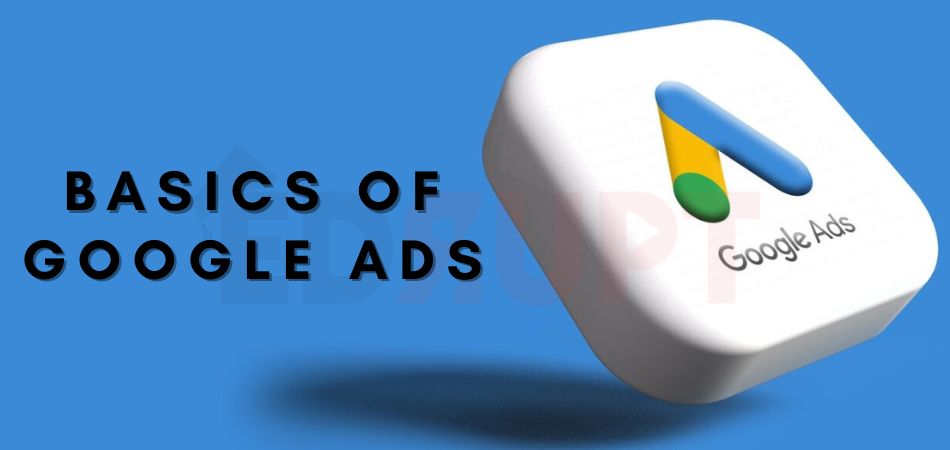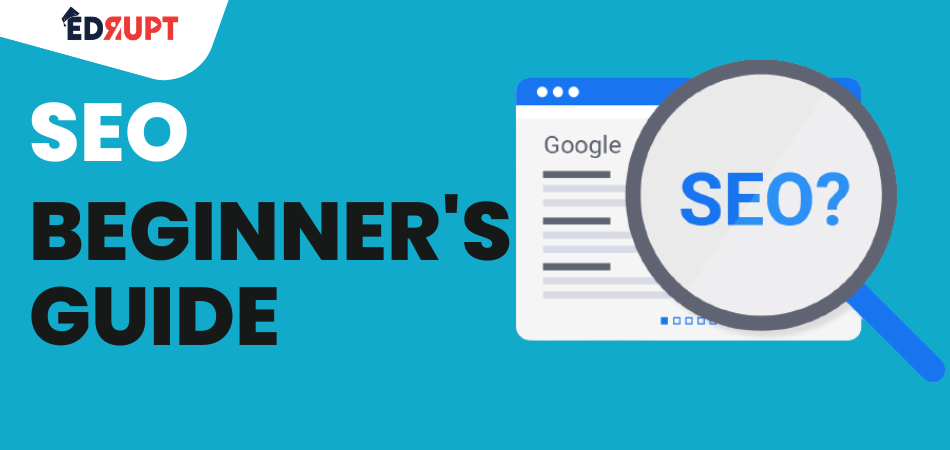The Basics of Google Ads: A Guide for Digital Marketers
Are you a digital marketer looking to level up your advertising game? Look no further! In today’s online world, Google Ads have become an essential tool for businesses aiming to reach their target audience effectively. But with so many features and options, where do you even start? Don’t worry; we’ve got you covered! Our comprehensive guide will take you through the basics of Google Ads, unraveling its mysteries and providing expert tips along the way. Get ready to embark on a journey that will transform your marketing strategies and help you unlock the full potential of this powerful platform. Let’s dive in!
Introduction to Google Ads
Google Ads, formerly known as Google AdWords, is a powerful online advertising platform that allows businesses to reach their target audience and promote their products or services through various channels such as search engines, websites, and mobile apps. It is one of the most popular advertising platforms used by digital marketers today due to its wide reach, cost-effectiveness, and precise targeting capabilities.
In this section, we will provide you with a comprehensive overview of Google Ads and its features so that you can understand how it works and how it can benefit your business.

What is Google Ads?
Google Ads is an online advertising platform created by Google in 2000. It allows businesses to create ads that appear on Google’s search engine results pages (SERPs), YouTube videos, partner websites, and mobile apps. These ads are displayed based on specific keywords or phrases entered by users in the search bar or browsing history.
How Does Google Ads Work?
Google Ads operates on a pay-per-click (PPC) model where advertisers only pay when someone clicks on their ad. The cost per click (CPC) varies depending on factors such as competition for keywords and relevance of the ad. It also offers other pricing models like cost per thousand impressions (CPM) for display ads and cost-per-acquisition (CPA) for conversion-focused campaigns.
To get started with Google Ads, businesses need to set up an account and create campaigns targeting their desired audience. Advertisers bid on keywords relevant to their products
Benefits of Using Google Ads in Digital Marketing
Google Ads is a powerful tool that has revolutionized the world of digital marketing. It allows businesses to reach their target audience in a highly targeted and efficient manner, making it an essential part of any successful digital marketing strategy. In this section, we will delve into the various benefits of using Google Ads for your business.
1. Highly Targeted Advertising
One of the biggest advantages of using Google Ads is its ability to target specific audiences based on demographics, interests, behaviors, and more. With this level of precision targeting, businesses can ensure that their ads are shown to the right people at the right time. This not only increases the chances of conversions but also helps in reducing ad spend wastage.
2. Cost-effective
Google Ads works on a pay-per-click (PPC) model, which means that advertisers only pay when someone clicks on their ad. This makes it cost-effective as businesses can set a budget and control how much they want to spend on each campaign. Moreover, with tools like keyword planner and quality score metrics, businesses can optimize their campaigns for better performance and lower costs.
3. Increased Brand Visibility
With Google Ads’ extensive reach across various platforms such as search engines, YouTube videos, Gmail ads, and more – businesses have increased opportunities to showcase their brand to potential customers. As users perform searches related to your products or services on Google or watch relevant videos on YouTube, your ads will appear in front of them – increasing brand visibility and awareness.
How Google Ads Works: A Step-by-Step Guide
Google Ads, formerly known as Google AdWords, is an online advertising platform developed by Google. It allows businesses to create and display ads on Google’s search engine results pages (SERPs), websites that are part of the Google Display Network, and YouTube videos. With over 3.5 billion searches per day, Google Ads presents a huge opportunity for businesses to reach their target audience and drive conversions.
But how exactly does Google Ads work? In this section, we will provide a step-by-step guide to help you understand the process of setting up and running successful campaigns on Google Ads.
Step 1: Define Your Advertising Goals
The first step in creating a successful campaign on Google Ads is to define your advertising goals. These could be increasing website traffic, generating leads, or driving sales. Having clear and specific goals will help you choose the right campaign type and targeting options that align with your objectives.
Step 2: Choose Your Campaign Type
Google offers various types of campaigns such as Search Network, Display Network, Video, Shopping, and App campaigns. Each campaign type has its own set of features and targeting options tailored for different business goals. For example, if your goal is to drive website traffic through search queries related to your products or services, then the Search Network campaign would be more suitable.
Step 3: Set Your Budget
Once you have chosen the appropriate campaign type for your business goals, it’s time to set your budget. You can choose from two budget options – daily budget
Types of Google Ads: Search, Display, Video, Shopping
Google Ads, formerly known as Google AdWords, is a powerful platform that allows businesses of all sizes to advertise their products or services through various types of ads. These ads appear on Google’s search engine results pages (SERPs) and other websites within the Google Display Network. With over 246 million unique visitors per month, Google is undoubtedly the most popular search engine in the world, making it an essential tool for digital marketers.
There are four main types of Google Ads: Search, Display, Video, and Shopping. Each ad type serves a different purpose and offers unique features to help businesses reach their target audience effectively. In this section, we’ll dive into each type of ad and discuss its benefits and best practices for creating successful campaigns.
Search Ads:
Search ads are text-based advertisements that appear at the top or bottom of Google’s search results when users enter relevant keywords related to your product or service. These ads are pay-per-click (PPC), meaning you only pay when someone clicks on your ad.
One of the significant advantages of search ads is their ability to directly capture potential customers who are actively searching for your offerings. It allows you to target specific keywords that relate to your business, ensuring that your ad appears in front of people who are interested in what you have to offer.
To create effective search ads, it’s crucial to conduct thorough keyword research and use compelling ad copy that clearly communicates your value proposition and entices users to click on your ad. Additionally, utilizing ad
Creating a Successful Google Ad Campaign
Creating a successful Google Ad campaign requires careful planning, thorough research, and continuous monitoring and optimization. In this section, we will walk you through the key steps to create a successful Google Ad campaign.
- 1. Define Your Goals: The first step in creating a successful Google Ad campaign is to clearly define your goals. Are you looking to increase website traffic, generate leads or sales, or improve brand awareness? Defining your goals will help you determine the right campaign type and ad format for your business.
- 2. Conduct Keyword Research: Next, conduct keyword research to identify the terms and phrases that are relevant to your business and target audience. This will help you choose the right keywords for your ads and ensure they appear in front of potential customers who are actively searching for products or services like yours.
- 3. Choose the Right Campaign Type: Google offers several campaign types such as Search Ads, Display Ads, Video Ads, Shopping Ads, etc. Each type has its own purpose and targeting options. It is important to choose the right campaign type based on your goals and target audience.
- 4. Set a Budget: Setting a budget is crucial in running a successful ad campaign on Google Ads. You can either set a daily budget or a total budget for your entire campaign duration. It is recommended to start with a smaller budget initially until you have optimized your campaigns for better results.
- 5. Create Compelling Ad Copy: Your ad copy needs to be compelling enough to grab the attention of potential customers and entice them.
Setting Goals and Budget for Google Ads
One of the first and most important steps in creating a successful Google Ads campaign is setting clear goals and establishing a realistic budget. Without these two elements, your efforts may not yield the desired results and could end up costing you more money than anticipated.
In this section, we will discuss the key factors to consider when setting goals and determining a budget for your Google Ads campaign.
1. Define Your Objectives
The first step in setting goals for your Google Ads campaign is to clearly define your objectives. What do you want to achieve with your ads? Do you want to increase website traffic, generate leads, or drive sales? Having a specific goal in mind will help you create targeted ads that are more likely to convert.
It is also important to make sure that your goals align with your overall business objectives. For example, if your company’s main goal is to increase revenue by 20%, then one of your Google Ads goals should be focused on driving conversions and increasing sales.
2. Identify Your Target Audience
Understanding who your target audience is can greatly impact the success of your Google Ads campaign. Use market research and data analytics tools to identify key demographics such as age, gender, location, interests, etc. This information will help you tailor your ad messaging and targeting options effectively.
3. Set Realistic Budgets
When it comes to setting a budget for Google Ads, it’s important to be realistic and strategic. You don’t want to overspend without
Targeting the Right Audience
Targeting the right audience is a crucial step in any successful Google Ads campaign. After all, the success of your ad relies heavily on whether or not it reaches and resonates with your target audience. In this section, we will discuss the various targeting options available in Google Ads and how you can use them to reach your desired audience.
- Location Targeting:The first step towards targeting the right audience is to define their location. Google Ads offers multiple options for location targeting, including country, city, region, and even radius targeting. This allows you to customize your ads based on where your potential customers are located.
- Demographic Targeting: Demographic targeting helps you narrow down your audience based on age, gender, household income, parental status, etc. This information can be especially useful if you have a specific demographic in mind for your product or service.
- Interest-Based Targeting: Google Ads also allows you to target users based on their interests and online behavior. By analyzing data from previous searches and website visits, Google can determine a user’s interests and show them relevant ads accordingly.
- Keyword Targeting: One of the most common ways to target an audience in Google Ads is through keyword targeting. You can choose keywords that are relevant to your business or industry so that when a user searches for those specific terms or phrases on Google, your ad appears.
- Placement Targeting: With placement targeting, you can choose specific websites or apps where you want your ads.
Choosing Keywords and Ad Format
When it comes to creating a successful Google Ads campaign, choosing the right keywords and ad format is crucial. This section will provide you with an in-depth look at how to select the best keywords and ad format for your campaign.
- Understanding Keywords: The first step in choosing keywords for your Google Ads campaign is understanding what they are and how they work. Keywords are specific words or phrases that users type into search engines when looking for products or services. These words act as triggers for your ads, making them appear on relevant search engine results pages (SERPs). It’s essential to choose high-quality keywords that accurately reflect your business and target audience.
- Conducting Keyword Research: To find the most effective keywords for your Google Ads campaign, you need to conduct thorough keyword research. Start by brainstorming a list of potential keywords that relate to your business, products, or services. You can also use tools like Google Keyword Planner, SEMrush, or Ahrefs to generate keyword ideas based on search volume and competition level.
- Using Long-Tail Keywords: Long-tail keywords are more specific phrases that target niche markets and have lower search volumes compared to broad terms. While they may not drive as much traffic as short-tail keywords, long-tail keywords tend to be more targeted and have higher conversion rates. It’s always a good idea to include long-tail keywords in your ad groups as they can help reach potential customers who are closer to making a purchase decision.
Optimization Tips for Better Results
- Optimization is a crucial aspect of any successful Google Ads campaign. It involves continuously optimizing and refining your ads to improve their performance and achieve better results. Here are some tips for optimizing your Google Ads campaigns:
- Conduct thorough keyword research: Keywords play a vital role in the success of your Google Ads campaigns. It is essential to conduct thorough keyword research to identify the most relevant and high-performing keywords for your ads. Use tools like Google Keyword Planner, SEMrush, or Ahrefs to find keyword ideas and assess their search volume, competition level, and cost-per-click (CPC).
- Utilize negative keywords: Just as important as using relevant keywords is identifying negative keywords that you do not want your ads to appear for. Negative keywords can help prevent irrelevant clicks, thereby improving the overall effectiveness of your campaign.
- Optimize ad copy: The text within your ad needs to be compelling enough to entice users to click on it. Experiment with different variations of ad copy, including headlines and descriptions, to see which ones perform best.
- Test different ad formats: Google offers various ad formats such as text ads, display ads, video ads, shopping ads etc., each with its own unique benefits and targeting options. Be sure to test out different formats to determine which works best for achieving your specific goals.
- Use ad extensions: Ad extensions provide additional information about your business within the same ad space, increasing its visibility and potential for clicks.
Measuring Success with Google Analytics
Measuring the success of your Google Ads campaigns is crucial for any digital marketer. Without proper tracking and analysis, it can be difficult to understand the effectiveness of your ads and make informed decisions for future campaigns. This is where Google Analytics comes in.
Google Analytics is a powerful tool that allows you to track and measure various metrics related to your website’s traffic, including the performance of your Google Ads campaigns. In this section, we will explore how to use Google Analytics to measure the success of your ads and gain valuable insights into their performance.
1. Set up Conversion Tracking
The first step in measuring success with Google Analytics is setting up conversion tracking. This feature allows you to track specific actions on your website that are valuable to your business, such as purchases or sign-ups. By implementing conversion tracking, you can see which ads are driving conversions and make data-driven decisions for optimization.
To set up conversion tracking, you need to create a conversion action in Google Ads and add the tracking code provided by Google Analytics to your website’s thank-you page or confirmation page. This will enable Google Analytics to record conversions from your ads accurately.
2. Monitor Key Metrics
Once conversion tracking is set up, you can start monitoring key metrics related to your ad performance in the “Acquisition” section of Google Analytics.
These metrics include:
- Sessions: The number of visits from users who clicked on one of your ads.
Bounce Rate: The percentage of sessions where a user only viewed one page before exiting.
Common Mistakes to Avoid in Google Ads
Google Ads is a powerful tool for digital marketers, but it can also be easy to make mistakes that can significantly impact the success of your campaigns. In this section, we will discuss some of the common mistakes to avoid in Google Ads.
- Not Setting Specific Goals: One of the biggest mistakes that advertisers make is not setting specific goals for their Google Ads campaigns. Without clear objectives in mind, it becomes challenging to create targeted ads and measure the success of your campaigns accurately. It’s essential to have a clear understanding of what you want to achieve with your ads, whether it’s increasing website traffic, generating leads, or boosting sales.
- Poor Keyword Research: Keywords are the foundation of any successful Google Ads campaign. However, many advertisers make the mistake of using broad and generic keywords instead of specific ones that are relevant to their business or product. This approach can result in low click-through rates and high costs per click (CPC). Before launching your campaign, invest time in thorough keyword research to identify relevant and highly searched terms related to your business.
- Neglecting Negative Keywords: While focusing on selecting the right keywords for your campaign is crucial, many advertisers overlook negative keywords entirely. These are search terms that you do not want your ads to appear for because they are irrelevant or could lead to unqualified clicks. By adding negative keywords, you can filter out unwanted traffic and improve the overall quality and relevance of your ad impressions.










